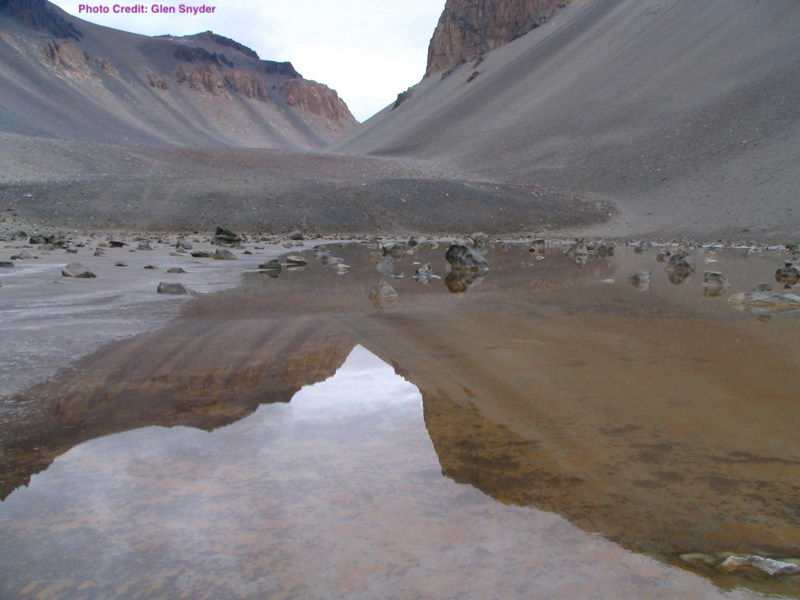
The saltiest body of water on Earth
No, not the Dead Sea. Given that pretty much everything freezes solid in Antarctica during winter, including the surface of the sea, it’s surprising that some things don’t.
One of those things is Don Juan Pond.
It is a hypersaline pond, discovered in 1961 and located in the Wright Valley in the McMurdo Dry Valleys of Antarctica.
This area is one of the driest and coldest deserts on Earth and often used as an analogue for Mars. Lt. Don Roe and Lt. John Hickey, piloted the helicopter that transported the first field party investigating the pond so their first names were combined to provide the pond’s name (Don John = Don Juan)
The pond’s maximum depth was only about 30 cms deep (12 inches) in 1997 and has been decreasing steadily in size, but if you could swim across it, you would only manage to swim the distance of two Olympic size pools (when it is full).
So, it’s definitely not a lake. You could easily float your way across it without sinking because it is the saltiest body of water on Earth, except that currently it is only about 10cm (4 inches) deep and is often completely dry.
Because of the salt it won’t freeze either, unless the temperature gets down to -50°C (-58°F) and that salt is not like ocean water salt, which is sodium chloride, the type you put on food.
This is Calcium Chloride and scientists are not sure why it accumulates here. The lack of other minerals, like Magnesium and Potassium, which are expected to be there, also has scientists perplexed.
What looks like mineral streaks in the rocks of the Dry Valleys are very similar to streaks seen on Mars and scientists are hoping that if they contain the lost minerals that the underlying processes may be the same as on Mars.
One of the the instruments scientists are using at Don Juan Pond is virtually identical to one currently being utilised on the Curiosity Rover on Mars and the hope is that the research here will shed light on what to expect on other planets, as well as explaining processes on Earth.

